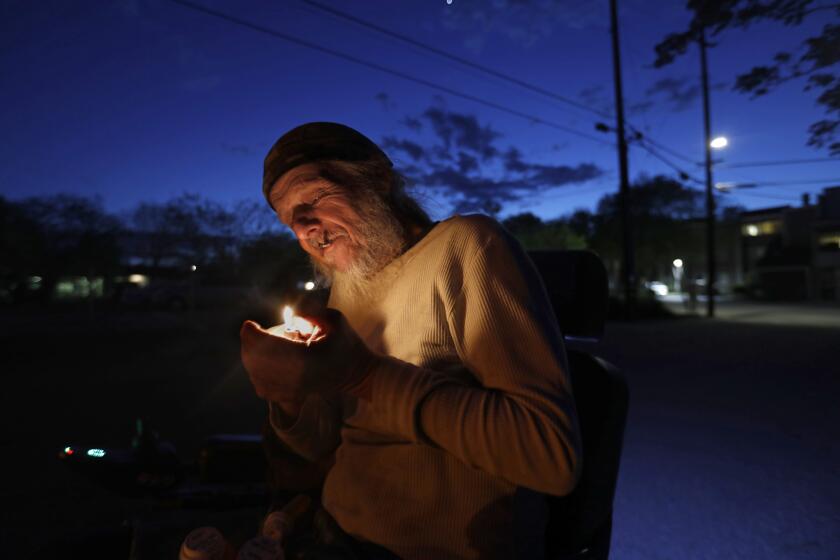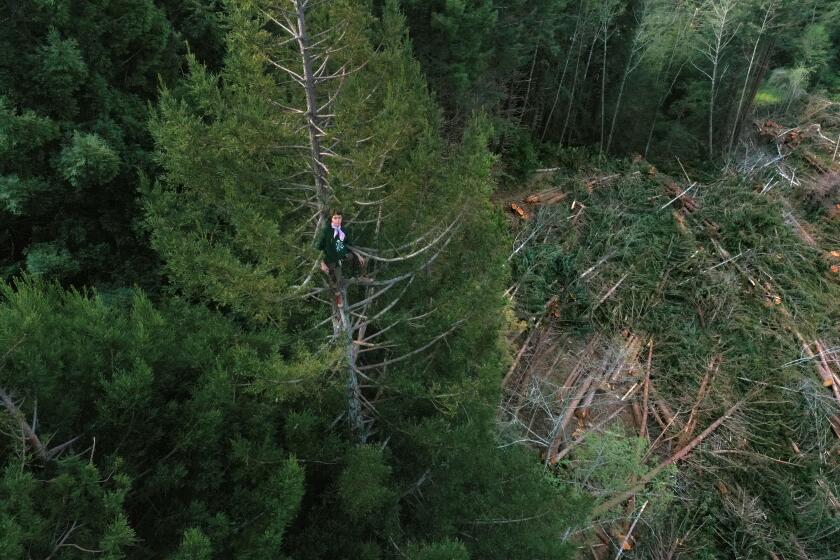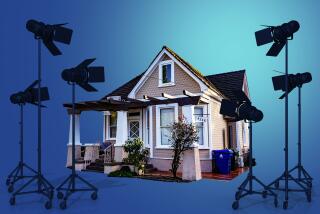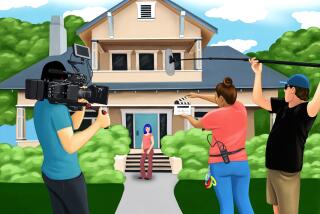Add vavoom to your Zoom with 4 tips from Hollywood sound and lighting pros

- Share via
Lights! Camera! Zoom!
Sure, you can plop down in front of your webcam in your robe, backlit by a window, and mumble into your coffee that “those numbers are no good, Bob,” or that you’ll “definitely have that presentation ready by Thursday, Sheila.” Or ... you can look and sound good doing it. (Dr. Patrick Soon-Shiong, the owner of The Times, is an investor in Zoom.)
Videoconferencing is suddenly a big part of our lives during quarantine, and most of us make the same rookie mistakes. Are your colleagues getting a good view up your nose? Or an uncomfortable peek at your bedroom?
So who better to solve these snafus than those film and TV creatives who help people look and sound good — and get their ideas across on camera — for a living?
The Times gathered user-friendly videochatting tips from a cinematographer, sound designer, costume designer and production designer — you know, pros. They made sure their advice was reasonable. For instance, no one insisted you wear pants.
Light the way
Cinematographer Greg Middleton (HBO’s “Watchmen”), true to his craft, went straight to lighting. To be fair, he hit the basics of framing — aim for chest-to-just-above-head, center yourself in the frame, place the camera at about eye level so you’re not looking way up or down — but he had the most to say about the way light paints the picture.
“Think about how the windows of Rembrandt’s studio faced north,” he said, as opposed to letting the sun blast directly in. While some have suggested that powerful light might fight coronavirus, Middleton warned against the harsh lines and shadows — and squinting — it creates. He explained that larger, closer light sources, rather than intensely focused ones, make faces look “nice, softer, younger.”
As to the dreaded desk lamp: “Don’t point it directly at you; bounce it off the wall.”
Just because you’re staying home doesn’t mean you have to be lonely. How to set up video chats for a dinner party, game night, karaoke session and more.
He said cinematographers favor tungsten bulbs or energy-efficient LEDs, which generate steadier light than fluorescents. He noted people who broadcast themselves often use ring lights.
“Think of a vanity mirror or makeup mirror that creates a softer effect by effectively making the source larger,” he explained. “You want the camera to be the mirror. Ring lights are like $60; they come with a stand and holder for your phone.”
But you can also make the most of what you have at home: Middleton advises positioning your light source in front of your face (behind the camera) because “it provides a light in your eyes — you can see reactions. Make the background darker than your face.” You can also hang a white bedsheet on the wall to the side (out of view) for bounce.
Webcam prices have doubled and even tripled during the pandemic. Middleton said he doesn’t think a big-deal webcam is crucial; proper use of light can forgive a lot of shortcomings.
“Look at pictures of yourself. What pictures do I look good in? Try to recreate that.”
Tune in to clear sound
Dallas Taylor, sound designer and host of the podcast “Twenty Thousand Hertz,” pointed out some rookie mistakes.
“The most common thing is having your speakers too loud,” he said, explaining how that can create a feedback loop, which at its gentlest is a distracting echo. He emphasized etiquette — letting one person speak at a time — because of sonic limitations, and not communicating from an isolation chamber.
“Don’t set yourself up in an empty room. You get an empty, pingy sound. Have stuff,” he said. “It greatly improves the intimacy of your voice. Be in front of a bookshelf with lots of books in it. Fabric is good, drapes are good.”
Taylor uses a pro mic but said, “Some of the best-sounding calls I’ve been on, on Zoom, are with people on laptops. Those mics are designed for it. But it’s also really easy to add a microphone [about $100-$200], and for a modest additional investment, a mic stand or boom arm. You can do clip-on microphones. I don’t love wireless options because that’s an extra step that can go wrong.”
However, earbuds with mic attached are fine for most users, he added — the mics are naturally close to your mouth and the earbuds eliminate the echo effect. They start around $5 on Amazon, with highly rated models ranging from around $15 to $40.
Dress for success
Costume designer Catherine Adair (“The Man in the High Castle”) mentioned color first.
“Everybody has different monitors, so I recommend not using a primary color. Sometimes it will bleed. Keep it in the pastels, [or] jewel tones that aren’t too strong,” she said. “Be careful of very busy prints. Don’t do a strong stripe or strong plaid. A muted plaid could be charming. Look at your skin color, look at your background. Don’t blend into your couch or your chair.
“Make sure that you feel comfortable in what you’re wearing,” she said, though she warned against distracting jewelry that might make noise or interact unfortunately with the light. And don’t slouch! “Still take pride in how you look and how you feel. You’re telling a story about yourself and telling it through what you’re wearing.”
The people who are adapting best to working from home are the ones who have been juggling demands all along: parents.
Project the world you want
“Homecoming” production designer Nora Takacs Ekberg said, “You always want to design the space for the character so it fits. Try to find the specific parts of your home that you like or that you feel most comfortable in. ... I try not to use my personal spaces like my bedroom that my coworkers don’t necessarily have to see.”
The most common mistakes are setting up in front of a white wall, which doesn’t tend to be flattering (and doesn’t say anything about you — “Hang something on the wall,” Ekberg said), or a window. Virtual backgrounds are fine, she added: “Some people might not feel comfortable sharing their living environments; it’s your call.”
But for those who are willing to reveal their (cleaned-up) homes, you have Ekberg’s permission to dress the set: “If you want to make a corner you set up for a video meeting — I know a lot of designers who do that, with pictures or sports stuff — that’s great. My husband is a cinematographer; I try to put his cameras and things there so people will think we’re this artistic family,” she said, laughing, “and not just see all the kids’ toys.”
More to Read
The biggest entertainment stories
Get our big stories about Hollywood, film, television, music, arts, culture and more right in your inbox as soon as they publish.
You may occasionally receive promotional content from the Los Angeles Times.


















